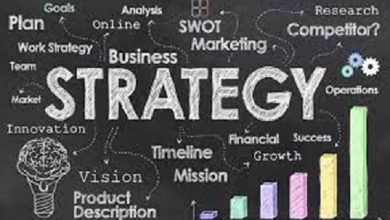Professional recognition types importance and 9 recognition practices
Professional recognition
Professional recognition is a people management strategy that motivates employees to seek personal and professional achievements in favor of their career and the success of the company in which they work. In this article we will provide you the types of Professional recognition.
Do you think professional recognition is just a way to feed employees’ ego? If so, that’s where you’re wrong!
It has been some time since the market began to understand that it is not just about fair wages that professionals are satisfied with their jobs.
Recognition policies are among the strategies for valuing human capital that motivate and avoid problems such as high turnover .
In this post, we talk about recognition at work and its importance not only for employees, but for the success of your company.
The importance of professional recognition
How often does your HR look for ways to keep employees motivated?
Recognizing someone’s professional performance is showing that the company values the employee and appreciates the work performed.
Gone is the idea that only insecure people need some kind of recognition. Of course, each professional receives this feedback in a different way, but the effect tends to be positive in all cases.
To begin to clarify the importance of professional recognition, we went in search of speeches by researcher Ashley Whillans , from the renowned Harvard University. Whillans says the following:
Money is important in people’s lives, but it’s not all that matters. What really matters in the workplace is helping employees feel valued.”
Now, why should your company manifest that it values its human capital? The answer is simple: to keep employees motivated, attract and retain talent .
You may already know that the market is competitive. Finding good professionals is not an easy task and neither is keeping them engaged with their work.
It’s no wonder that HR adopts different recruitment and people management strategies to try to form strong teams and keep productivity up there .
When professional recognition enters the picture as a sign that employees have done a good job, the natural response is for them to try even harder.
In other words, more than a reward, recognition works as a kind of stimulus that makes professionals and teams want to surpass their own results.
1-The vision of science: recognition and motivation
Speaking of stimuli, it is worth remembering that we respond to them constantly, and this leads us to talk briefly about science and biological factors.
For a long time, dopamine has been associated with happiness. However, according to John Salamone , professor of Psychology at the University of Connecticut, studies show that the neurotransmitter is linked to motivation.
Dopamine levels influence a human’s performance, something that is reflected in their work .
While absence makes people less likely to work for a purpose, presence leads to the opposite effect.
Also according to Salamone, among the triggers that activate the release of dopamine is recognition .
When we deal with children, we more easily recognize the power of stimuli to encourage them to do something or behave in a certain way.
Considering that, with life experience, we come to understand our obligations better, we tend to ignore the power of stimuli.
We brought the vision of science precisely to show that adults also respond when stimulated, reinforcing the power of recognition at work.
2-On the other side: the view of employees
Glassdoor is a specialized website that allows employees and former employees to rate their experience at a company anonymously.
The evaluation serves for professionals to evaluate potential employers and for employers themselves to have an indication of how they are seen by professionals.
With this premise of improving work relationships, Glassdoor conducts surveys such as the one that lists advice that employees would give to the presidency of companies.
First on the list of what professionals would like to receive from employers is more recognition .
So, if you had doubts that this appreciation is important for professionals, you don’t have any more, right?
Types of professional recognition
Understanding what professional recognition is involves knowing the different types of recognition ― and, further on, checking out some examples of practices.
1-Formal recognition
Formal recognition is one that has been properly planned before being carried out .
If the company decides that it will give a bonus to the employee who stands out the most in a certain period, for example, it will need to plan for that.
2-informal recognition
On the other hand, informal recognition is the most common on a day-to-day basis and usually involves people who work together directly .
A clear example of this type of professional recognition is the famous feedback .
Taking advantage of this, let’s take it as an example to unravel the role of HR a little more. The feedback is a simple and powerful tool, but it needs to be well used.
Positive feedback , with all its motivating power, can be given to a professional in the presence of his team. However, care must be taken not to create the impression that there is a favourite.
On the other hand, negative feedback works best when given privately—unless it applies to the whole group—to avoid embarrassment.
If the practice is not common in the company, it is up to HR to guide leaders on how to properly adopt it.
9 professional recognition practices
To help you delve deeper into the subject, we have separated some examples of professional recognition practices that your company can adopt.
Note that, when presenting them, we are not saying that it is necessary to adopt them all, ok? HR needs to know its options to assess which best fits the organization’s reality and culture.
1. Positive Feedback
Feedback is not just to “pull the ear” of an employee or team. Unlike that, if we’re talking about professional recognition, we need something that works as a positive reinforcement.
The idea is far from flattering and praising anything and everything, but actually recognizing when a job is done well and exposing it .
Positive feedback boosts the morale of those who receive it and can also have an impact on others.
Others may feel encouraged to receive the same recognition and, from that, to dedicate themselves more to the exercise of their functions.
2. Celebration of results
Does your company work with goals and did the team achieve the expected performance? Promote a celebration.
Celebrating is recognizing the joy generated through an achievement , something that reinforces the idea of valuing the work and commitment of the employees who contributed to the result.
Celebrations can be simple, such as a lunch paid for by the company, or larger events, such as a party that also involves family members, for example.
Everything will depend on the expressiveness of the results, the dynamics adopted and, of course, the possibilities of the company.
In any case, here we are talking about a professional reward strategy that requires some planning.
3. Bonuses and Awards
Before they even materialize, bonuses and awards are motivating factors for professionals . Only then do they become a form of professional recognition.
In order for them to work well, HR needs to profile employees and understand what kind of rewards they would like to earn.
We emphasize here that bonuses can indeed be financial. However, the company can define other strategies such as extra days off or vacation and so on.
Sometimes a gift has a more interesting effect than a one-off increase in pay.
4. Public recognition
In addition to positive feedback , if an employee has excelled and will earn a reward, HR may suggest that the manager take the time to make a public recognition.
It’s just that when an achievement is shared with others, it tends to become even more special . Something that can motivate the same employee to keep trying to outdo himself.
Also, when watching a colleague receive professional recognition, others may be more interested in being in the same position and motivated by example.
5. Time flexibility
The maxim “time is money” was used to exhaustion. Although it continues to make sense, apparently, it has begun to gain new interpretations.
In the spotlight is the idea that those who have free time are rich because, nowadays, time has become one of the most valuable things we have .
For this reason, adopting a flexible schedule can be an excellent form of professional recognition.
Namely, we are talking about a journey that guarantees the employee more autonomy to define the times to fulfill his workday, which applies if the activity is carried out in the company or remotely.
6. Delegation of tasks
Speaking of autonomy, delegating important tasks is also a form of recognition because it demonstrates confidence in the professional .
This is a strategy that needs to be planned from the point of view of a change in the way of leading to stimulate and open space for self-management .
The idea is that employees have their performance recognized so that they can choose their tasks, manage their own time and share their ideas without needing a leader all the time.
7. Offer of benefits
The offer of benefits is well known as a form of professional recognition and consequent employee motivation.
It turns out that you can’t offer any benefit because professionals need access to something that makes sense to them. Therefore, benefits management comes into play as an HR attribution.
If the company prioritizes professionals with fluency in English for management positions, for example, a good benefit is a partnership with a language school.
This offer is therefore something that needs to be planned. The choice of benefits needs to be strategic and can vary based on the profile of the employees.
8. Position and salary plan
A lack of career prospects is behind many layoffs. And if we are talking about professional recognition, a clear path is promotion within the company.
Moving up in the organization’s hierarchy is a common objective and, for this to happen, there must be a solid and effective job and salary plan .
This is “one of the most strategic and valued tools by professionals” because it shows that their efforts are undoubtedly being rewarded.
9. Acknowledgments
Last but not least, we suggest gratitude as a professional recognition strategy.
Even without beaten goals, tasks are accomplished daily and a “thank you” makes all the difference.
In addition to promoting rapprochement between people, gratitude shows that, in your company, managers do not follow the idea of “did not do more than their obligation”.
Something that, in a very simple gesture, reinforces the value that the performance of each one has for the day to day .
The benefits of professional recognition
We have already made it clear that professional recognition promotes the motivation of a company’s employees, but that is not all.
The following are the main benefits of this human capital enhancement strategy:
1-team motivation
If the individual is motivated by recognition strategies, so can the team.
Even if we take practices as a basis, such as the celebration of results, which involves an entire group, it becomes easier to understand.
An interesting point is that a team that knows that good work will be recognized tends to stick together more .
With this, professional recognition makes teams communicate more, exchange knowledge and act, in fact, as a team.
2-Productivity increase
Motivation can have a direct impact on productivity. More motivated employees have a more dynamic work pace.
In addition, they combine speed with quality because they know that there is no point in delivering fast, it is necessary to deliver well done so that professional recognition can come.
As a result, professionals and teams can start to perform more and better.
3-Improved results
A clear consequence of what we are talking about here is the improvement of the company’s results.
What every employer wants is to make the most of their employees’ potential. On a day-to-day basis, there are managers who are frustrated by knowing that the deliveries of a professional are below their capacity.
The lack of motivation is not the only factor that can explain this problem, however, it is a common factor.
For this reason, professional recognition can positively impact performance and improve results.
4-Retaining talent
Professional recognition, in addition to appreciation, promotes a sense of justice. This means that the employee feels that the company sees value in their work and that they are properly rewarded for all their efforts.
This combination of factors is part of what helps professionals feel satisfied in a job and want to stay in the company.
If someone feels that they are not needed or that their work is not appreciated, they will eventually look for another opportunity. The same happens with those who do not see growth prospects.




